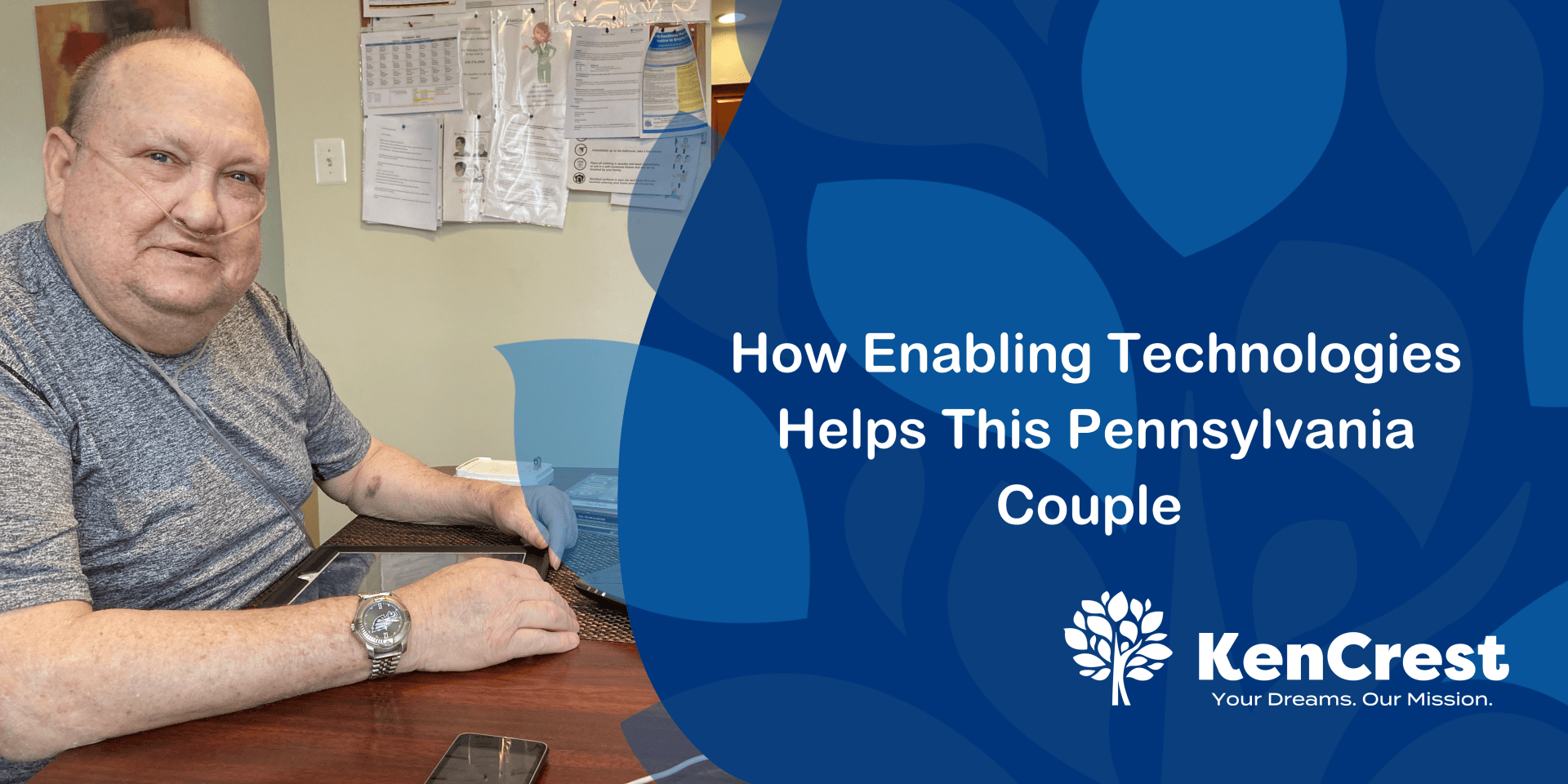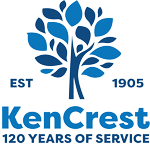
KenCrest’s Enabling Technology program supports various people with disabilities to live more independently, including George and Louise.
By Sydney Kerelo
George and Louise received support for more than 20 years through KenCrest’s residential program. The couple heavily relied on their support network, and when the DSP Crisis began, they wanted to gain independence; that’s when our Enabling Technology department stepped in.
“I have been working with them for the better part of a year,” says Joe McGuire, the Assistive Technology Specialist. “Most of it has been encouraging them to fail. Their journey involves taking these small steps and exploring how to broaden them into bigger things.”
At first, the couple was hesitant to introduce technology into their home, but soon after, they became obsessed with finding new devices they could use to enhance their self-reliant lifestyle.

“For many of the people we support, they’ve never been able to do that on their own. Somebody usually does it for them, or it’s simplified so they can engage with it,” says McGuire. “Now, there’s the sudden realization that you can do it independently, and it can be empowering.”
One example of this empowerment is when George tells McGuire that he would like to learn to read to get his license. McGuire downloaded a few reading apps onto George’s phone so he could practice reading anytime he wanted. But he needed help with the logistics of the app, an issue McGuire sees often. Many people in the disability community have become so accustomed to having someone do everything for them that they have trouble figuring out things independently.
McGuire combats this by taking it step-by-step and working with everyone so that they understand the technology, how it operates, and what it can do.
“One of the big things I talk about is making sure that each person sees the value in what they’re trying to do,” says McGuire. “Sometimes that takes an afternoon or a year.”
George now uses his iPad to read beginner books and even the Pennsylvania Drivers Manual, where he hopes to learn how to drive again.

Louise, on the other hand, is more conservative when it comes to technology. She insists she doesn’t need any help and to look after George. But recently, she bought herself a Fossil smartwatch with Bluetooth and a heart rate tracker. McGuire sat down with her, got the watch set up, and tested it out a few times.
She instantly loved it and used it daily to track her heart rate during her exercises.
“Typically, I show up weekly with George and Louise, and the control is in their hands. They tell me what we’re doing now,” laughs McGuire.
Recently, McGuire had his work cut out for him when George asked him to transfer his entire CD collection to his computer (made in the early 2000s.)
“It’s so old that it doesn’t connect to WIFI,” McGuire adds. With a challenge on his hands, McGuire tried to do the music transfer but ended up downloading Spotify to George’s iPad instead.
He learned how to operate the iPad and uses it to play music whenever he wants.
“George loves talking to his brother, but he doesn’t get to do so often. So, when we got his iPad up and running, I taught him how to FaceTime with his brother, and they’ve been communicating a lot more often.”

According to the World Health Organization, approximately one in four adults in the United States has a disability. KenCrest’s Enabling Technology Department helps support people with disabilities through assistive technologies that allow for greater independence.
“Anyone supported by KenCrest and interested in technology can come to our department, and we support them based on what they want,” says McGuire.
